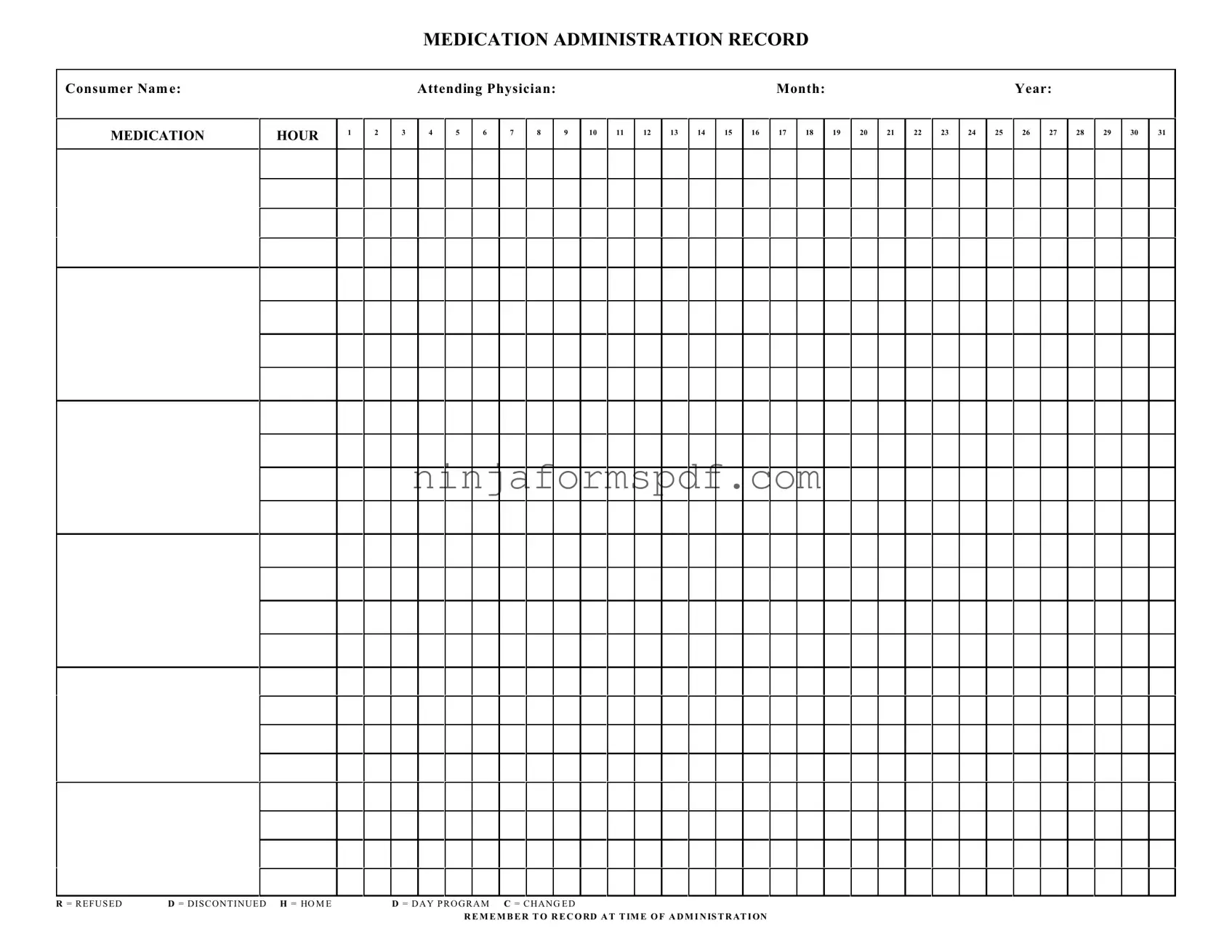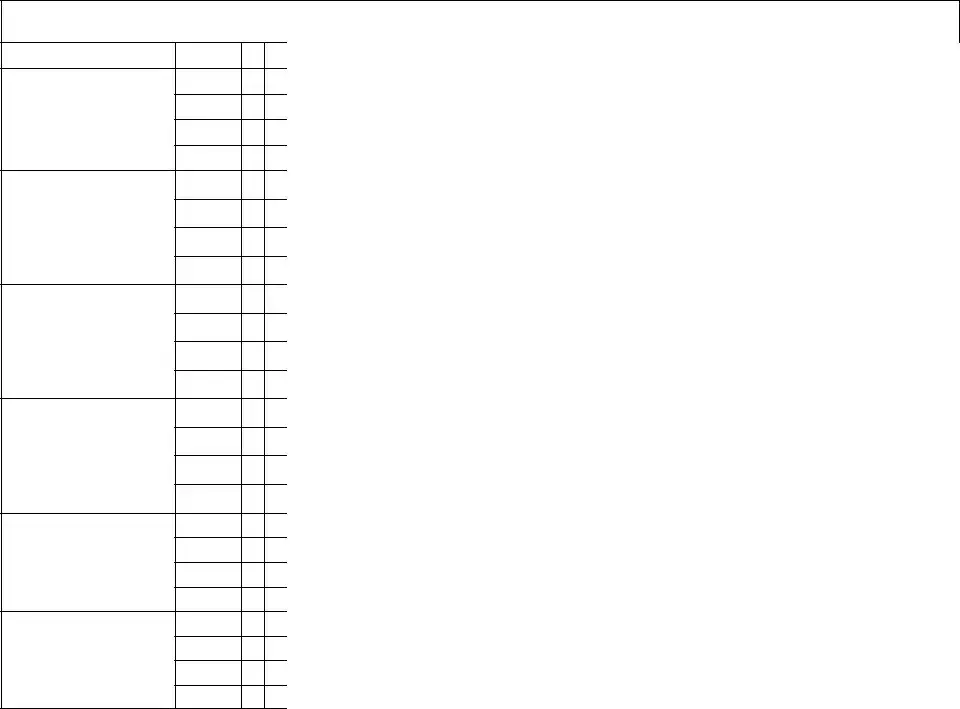What is a Medication Administration Record Sheet?
A Medication Administration Record Sheet is a comprehensive document used to record all medications administered to an individual over a specific period, typically a month. It includes the consumer's name, medication details, dosage times, and attending physician's name. It provides a daily log for medication administration, tracking any changes, refusals, or discontinuations of medication.
How do I fill out the Medication Administration Record Sheet?
When filling out the sheet, record the medication name, dosage, and the specific time it was administered in the appropriate columns for each day of the month. If the individual refuses a medication, mark an "R" in the corresponding cell. For discontinued medications, use "D," and for changes in medication or dosage, mark "C." Always ensure to record the information at the time of administration to maintain accuracy.
What does "R," "D," and "C" stand for on the sheet?
On the Medication Administration Record Sheet, "R" stands for refused, indicating that the consumer declined to take the medication at the scheduled time. "D" signifies discontinued, meaning the medication was stopped, either temporarily or permanently. "C" represents a change in the medication regimen, whether a dosage adjustment or a switch to a different medication.
Who should complete the Medication Administration Record Sheet?
Healthcare professionals or authorized caregivers responsible for administering medication to the consumer should complete this sheet. This ensures that the individuals administering the medications are directly recording the administration details, maintaining an accurate and up-to-date record.
Why is accurate recording on this sheet important?
Accurate recording is crucial for maintaining the health and safety of the consumer. It helps in tracking the effectiveness of medications, identifying any adverse reactions, ensuring compliance with the prescribed medication regimen, and communicating important information among healthcare providers. Inaccuracies can lead to medication errors, which can have serious consequences.
What should I do if a medication is refused or discontinued?
If a medication is refused, mark an "R" for that day and time, and notify the attending physician as soon as possible to decide the next steps. For discontinued medications, mark a "D" and remove the medication from the administration schedule according to the physician's orders. Always follow up on any medication changes with the prescribing healthcare provider to ensure continuity of care.

